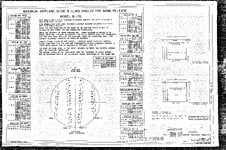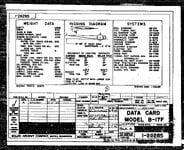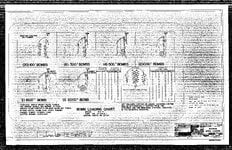HiNo. The bomb was attached to the rack, the sway braces (crutches in RAF speak) adjusted to fit and then the complete assembly winched into the aircraft. As you can see in post 43 there is no way that you could get your arms between the bomb and bomb bay skirt to adjust the sway braces in situ.
This part of Fig 4 in post 41 shows the bomb and rack attached to the cable and hanging about a foot below the installed position.
View attachment 791924
This part shows the assembly pulled all the way up
View attachment 791925
and this shows the swivel locking hook engaged in the loading link. Once the link is fully engaged the adjusting screw is screwed down firmly and then the cable tension is released. and cable and pulley cradle are moved to the next location. The spring loaded control for the adjusting screw works a bit like the direction control on a ratchet wrench. Move it one way and you can only tighten, move it the other way and you can loosen the adjusting screw.
View attachment 791926
The manual describes it thus. In (iii) it makes more sense with a comma after the word bomb or it said Fit the carrier to the bomb, adjust the crutches, set the fuse units and links.
View attachment 791927
This diagram from the RAF manual may describe it better. View D shows the rack and bomb assembly when it has just cleared the trolley.
View attachment 791928
Images from 'Britain's Wonderful Air Force' of January 1942 showing methods of winching for bombing up of Stirling and Wellington:
Mike



